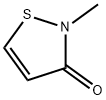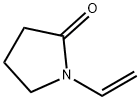4-Methyl-5-vinylthiazole
- CAS NO.:1759-28-0
- Empirical Formula: C6H7NS
- Molecular Weight: 125.19
- MDL number: MFCD00005337
- EINECS: 217-160-4
- SAFETY DATA SHEET (SDS)
- Update Date: 2024-12-18 14:08:52

What is 4-Methyl-5-vinylthiazole?
Chemical properties
CLEAR YELLOW TO BROWN LIQUID
Chemical properties
4-Methyl-5-vinylthiazole has a nutty, cocoa odor.
Occurrence
Reported found in cocoa aroma, yellow passion fruit aroma, garlic, pork, cognac, roasted filberts and soursop.
The Uses of 4-Methyl-5-vinylthiazole
4-Methyl-5-vinylthiazole is found in flowers and is highly attractive to both male and female beetles of three species of the genus Cyclocephala, pollinators of the studied plant taxa.
Taste threshold values
Taste characteristics at 20 ppm: nutty, musty, earthy, cocoa powder-like
General Description
4-Methyl-5-vinylthiazole is a nitrogen and sulphur-containing heterocyclic compound, present in the species of Annona (magnoliids, Annonaceae) and Caladium bicolor (monocots, Araceae). It is extremely attractive to both male and female beetles of three species of the genus Cyclocephala.
Properties of 4-Methyl-5-vinylthiazole
| Melting point: | -15 °C (lit.) |
| Boiling point: | 78-80 °C/25 mmHg (lit.) |
| Density | 1.093 g/mL at 25 °C (lit.) |
| refractive index | n |
| FEMA | 3313 | 4-METHYL-5-VINYLTHIAZOLE |
| Flash point: | 159 °F |
| storage temp. | Inert atmosphere,2-8°C |
| solubility | Chloroform (Slightly), Methanol (Slightly) |
| form | liquid |
| pka | 3.17±0.10(Predicted) |
| color | Dark Yellow |
| Specific Gravity | 1.093 |
| Odor | at 0.10 % in dipropylene glycol. musty nutty root vegetable cocoa |
| JECFA Number | 1038 |
| BRN | 107867 |
| Stability: | Light and Temperature Sensitive |
| CAS DataBase Reference | 1759-28-0(CAS DataBase Reference) |
| NIST Chemistry Reference | Thiazole, 5-ethenyl-4-methyl-(1759-28-0) |
| EPA Substance Registry System | 4-Methyl-5-vinylthiazole (1759-28-0) |
Safety information for 4-Methyl-5-vinylthiazole
| Signal word | Warning |
| Pictogram(s) |
 Exclamation Mark Irritant GHS07 |
| GHS Hazard Statements |
H302:Acute toxicity,oral H315:Skin corrosion/irritation H319:Serious eye damage/eye irritation H335:Specific target organ toxicity, single exposure;Respiratory tract irritation |
| Precautionary Statement Codes |
P261:Avoid breathing dust/fume/gas/mist/vapours/spray. P264:Wash hands thoroughly after handling. P264:Wash skin thouroughly after handling. P270:Do not eat, drink or smoke when using this product. P301+P312:IF SWALLOWED: call a POISON CENTER or doctor/physician IF you feel unwell. P302+P352:IF ON SKIN: wash with plenty of soap and water. P305+P351+P338:IF IN EYES: Rinse cautiously with water for several minutes. Remove contact lenses, if present and easy to do. Continuerinsing. |
Computed Descriptors for 4-Methyl-5-vinylthiazole
New Products
Tert-butyl bis(2-chloroethyl)carbamate (S)-3-Aminobutanenitrile hydrochloride N-Boc-D-alaninol N-BOC-D/L-ALANINOL N-octanoyl benzotriazole 4-Hydrazinobenzoic acid 3,4-Dibenzyloxybenzaldehyde 1,1’-CARBONYLDIIMIDAZOLE R-2-BENZYLOXY PROPIONIC ACID 1,1’-CARBONYLDI (1,2-4 TRIAZOLE) 4-HYDROXY BENZYL ALCOHOL 3-NITRO-2-METHYL ANILINE (2-Hydroxyphenyl)acetonitrile 4-Bromopyrazole 5-BROMO-2CYANO PYRIDINE 5,6-Dimethoxyindanone 5-broMo-2-chloro-N-cyclopentylpyriMidin-4-aMine 4-methoxy-3,5-dinitropyridine 2-(Cyanocyclohexyl)acetic acid 2-aminopropyl benzoate hydrochloride 1-(4-(aminomethyl)benzyl)urea hydrochloride tert-butyl 4- (ureidomethyl)benzylcarbamate diethyl 2-(2-((tertbutoxycarbonyl)amino) ethyl)malonate Ethyl-2-chloro((4-methoxyphenyl)hydrazono)acetateRelated products of tetrahydrofuran








You may like
-
 4-Methyl-5-vinylthiazole CAS 1759-28-0View Details
4-Methyl-5-vinylthiazole CAS 1759-28-0View Details
1759-28-0 -
 4-Methyl-5-vinylthiazole CAS 1759-28-0View Details
4-Methyl-5-vinylthiazole CAS 1759-28-0View Details
1759-28-0 -
 55441-95-7 99%View Details
55441-95-7 99%View Details
55441-95-7 -
 N-Vinylformamide 99%View Details
N-Vinylformamide 99%View Details
13162-05-5 -
 Chloro Uracil 1820-81-1 99%View Details
Chloro Uracil 1820-81-1 99%View Details
1820-81-1 -
 2-ethyl-6-methyl-3-hydroxypyridine succinate 99%View Details
2-ethyl-6-methyl-3-hydroxypyridine succinate 99%View Details
127464-43-1 -
 2-ETHYLPYRIDINE 100-71-0 99%View Details
2-ETHYLPYRIDINE 100-71-0 99%View Details
100-71-0 -
 181228-33-1 (S)-Methyl 3-amino-2-((tert-butoxycarbonyl)amino)propanote Hydrochloride (DAP-OMe. HCl) 99%View Details
181228-33-1 (S)-Methyl 3-amino-2-((tert-butoxycarbonyl)amino)propanote Hydrochloride (DAP-OMe. HCl) 99%View Details
181228-33-1